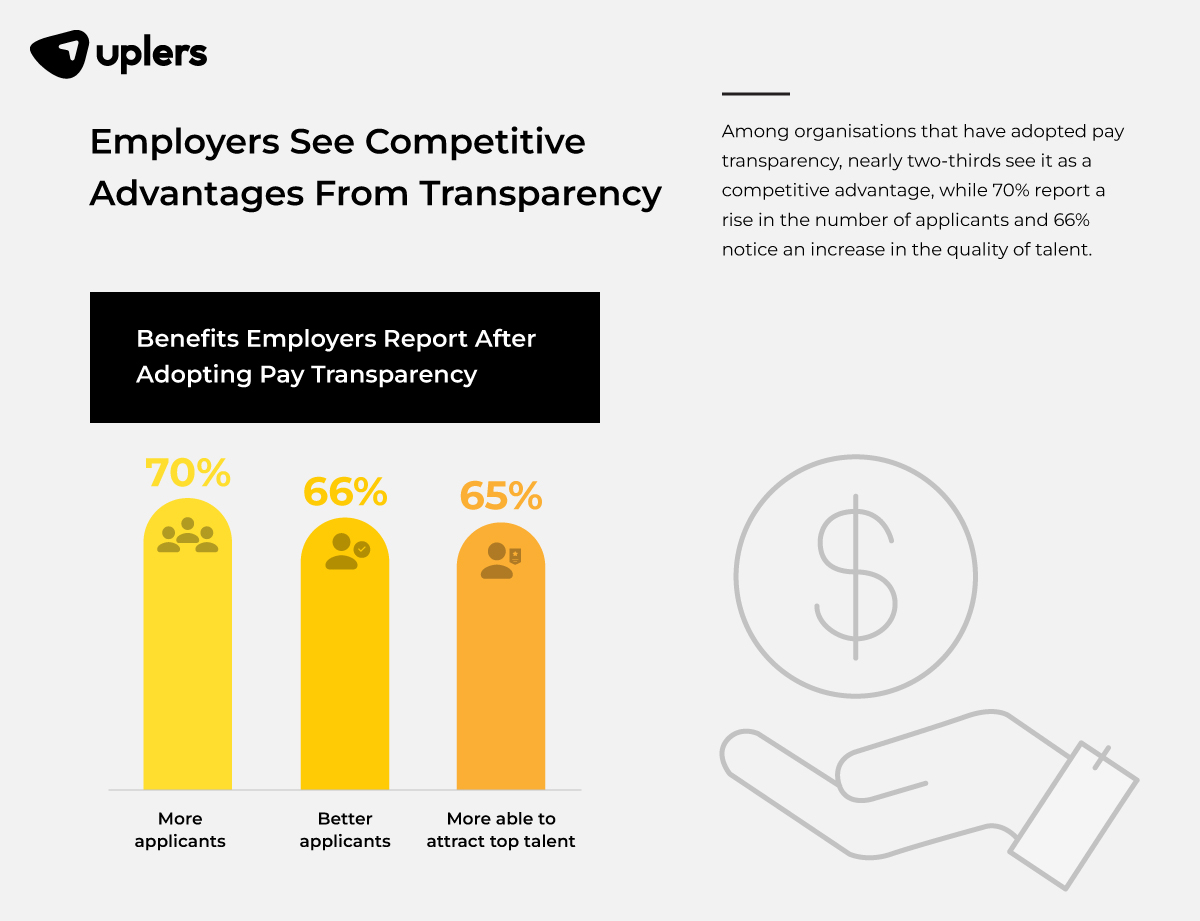Pay Equity Analysis: A Comparative Global Market Study on Sourcing and Retaining Top Talent
- Aabha Tiwari
- March 13, 2024
- 5 Minute Read

2023 was a rough year for tech companies worldwide, as economic downturns and margin pressures compelled them to layoff several employees. The shortage of top tech talents in the US, UK, EU, and AUS further increased the challenge to find skilled talents for the long run.
Amidst this, the salary demands of local tech talents in the US, UK, and AUS have risen by 10%-40% over the last two years. This has created a hiring conundrum for recruiters and hiring managers to find the right talent within their budget.
A recent Korn ferry report says that by 2030 major digital and tech companies in the US, UK, AU will face human tech talent shortage with potential revenue losses of $8.5 trillion. Interestingly, India stands out as the only country with a talent surplus.
Consequently, 55% of SMBs (Small Mid-sized Businesses) are now actively hiring from India and are looking for ways to streamline their remote hiring process to get the right talent. Therefore, a lot of global companies are focused on the Indian market to understand their salary (and benefit structure) and also their cultural differences.
This blog will shed light on how you as a global company can conduct a pay equity analysis to avoid ambiguity on salary benchmarks in the hiring process.
Behavior-Trend Observed By The Decision Makers Of Global Companies When Hiring From India
The hiring process for global tech and digital companies when hiring talent from India reflects a different set of behavior trends observed among decision-makers. Some of them we have listed here:

They are not open to hire for tech roles from India
As per Wikipedia, India is a major exporter of IT services with roughly 79% of the industry’s revenue. However, hiring managers often struggle to find quality talent from India because of challenges such as time zone differences and communication issues. Managing talent overseas has also become a challenge due to a lack of proper management and infrastructure to balance the work from India. Many HR professionals believe that the only solution to address revenue problems with Indian talent is by having them on-site. Still, it can be effectively managed remotely with the right infrastructure.
They do not have the right resources
Even when companies have job openings, they struggle with hiring practices and writing clear job descriptions. Their screening process is disorganized, making it hard to find the right candidates among thousands of resumes. Also, the hiring process lacks transparency and clarity. However, these issues can be resolved with the right executives in place.
They feel it is too much work
Decision makers often think that they will have a lot of work in payroll and management, so they do not hire remotely. But they don’t know that companies can save more than 40% on each talent when they hire from India. All they need is the right hiring platform where they can find pre-vetted talents with the right skills and assistance with payroll, management, and payment compliance infrastructure.
Cultural Differences
Companies fail to engage with good talents as they are unable to understand and provide the required cultural inclusivity. However, Indians are increasingly willing to collaborate with global companies, making them highly adaptable to global work cultures. Moreover, more than 22% of companies in the United States and Australia are open to incorporating diverse cultures within their organizations.
Do not have the right key-information
When hiring from India, employers often struggle to determine the appropriate salary for qualified candidates due to distorted salary information. There is a common perception that Indians are cost-effective but accurate and readily available information on salary and benefits is lacking. However, companies can explore the salary analysis tool that provides comprehensive analysis, industry salary scales, and ranges for entry to seniors for more than 100 roles.
Don’t know the salary expectations
In India, salaries may be lower than in some Western countries, but it’s important to consider regional differences and offer competitive pay. Many tech and digital businesses in the USA, Australia, and the UK prefer India due to cost-effectiveness and access to a diverse talent pool. You can use a salary calculator to compare salaries between Western countries and India.
Empower Your Hiring Decisions With Data-Driven Salary Analysis
Explore NowHow to conduct a pay equity analysis when hiring the right talent from India?
India has the world’s second-largest workforce, with over 500 million people actively contributing. Here are the simple steps on how to do a pay equity analysis when hiring the right talent:
Choosing the right hiring partner
Choose the right hiring partner or platform that efficiently provides pre-vetted talent within a shorter time frame, compliance with laws, regulations, and payment protocols. More than 45% of companies end up choosing the wrong hiring partners leading to a less-than-ideal hiring experience in India. Getting assistance from the right hiring partner ensures a thorough and fair assessment of each candidate through an AI-driven process. Plus, Live Video Call Assessments instantly highlight candidates’ skills, proving their authenticity and competence.
Cultural Understanding
While more than 40% of companies prioritize cultural diversity in their hires, only 5% take the initiative to educate themselves on cultural nuances and successfully integrate these values with their talent pool. It is crucial to comprehend the Western and Indian contexts of communication, differences between high-context and low-context cultures, cultural values, and the balance between pragmatism and innovation before hiring talent from India.
Competitive salary market analysis
Job postings for Indian tech talents in the US have surged by 102% in the last three years. To determine competitive compensation, salary market tools or pay equity analysis tools are essential for this analysis. They provide accurate data on what similar roles pay in your industry and location including local and Indian markets. This helps you differentiate salaries effectively and offer fair compensation to attract top talent in each region. Analyzing salary through salary market tools will help you identify the right talent at fair pay especially when you hire talent from India.

Why competitive market salary analysis is important for HRs and hiring decision-makers?
Competitive market salary analysis will give hiring managers the idea to understand what the salary market in their region is and for the same quality talent in other regions.
- By understanding the compensation offered by competitors, HRs, and decision-makers can target their recruitment efforts toward candidates who are more likely to be receptive to their offers. This can save time and resources by attracting candidates who are a good fit from a salary perspective.
- Salary analysis equips HR with data to justify their offered compensation package during negotiations. They can explain how their offer aligns with market rates and highlight any additional benefits that make the position attractive.
- Understanding salary trends helps the HR and hiring managers set realistic budgets for new hires. This allows them to plan for personnel costs and avoid exceeding budget limitations.
- Competitive compensation is a key factor in employee satisfaction and retention. By offering salaries that are in line with the market, companies can reduce the risk of their employees leaving for better-paying opportunities elsewhere.
- Staying informed about market rates helps ensure that a company’s compensation practices comply with legal requirements regarding minimum wage and equal pay.
Final Thoughts
If you want to avoid margin pressure and attract good talent from India, you need to understand the salary requirements of Indian professionals. To comprehend the Indian talent market, explore Uplers’ salary analysis tool. This amazing tool allows you to analyze real-time salary data in countries such as the US, UK, AU, and more, enables you to compare the salary of Indian remote talent, and provides better pay equity analysis. Hiring talent from India is cost-effective and provides access to a wider talent pool- trust us, this tool will make all the difference in your hiring strategy.

Thank you for submitting the details!
We will keep your information safe. Feel free to contact us with any questions at hello@uplers.com
Please check your email for next steps shared by Robert.

















